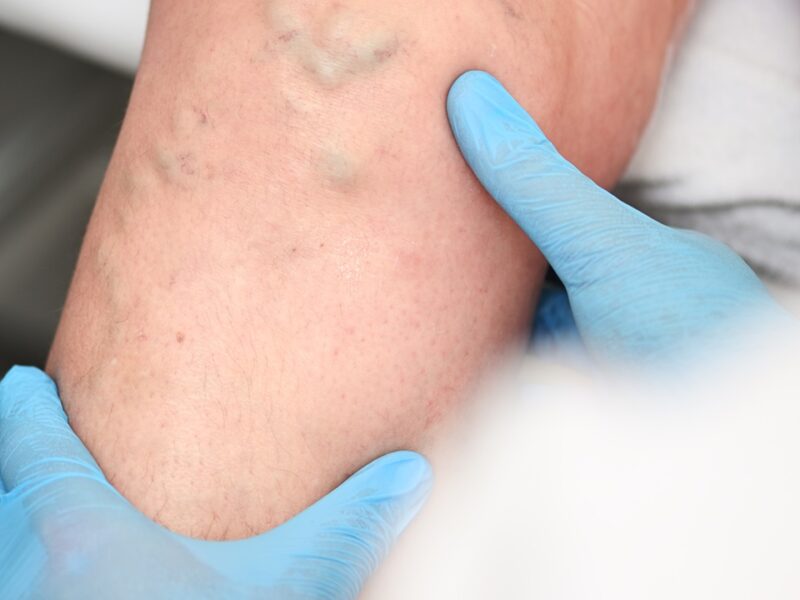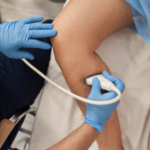Introduction: Desk Jobs and Vein Health
Many individuals spend hours each day sitting at desks, which can have serious repercussions for their vein health. Sedentary work environments have become more common than ever, reducing circulation to the legs and leading to varicose or spider veins forming as blood flow slows.
Sitting for long periods allows blood to collect in the lower extremities, increasing pressure in veins. Over time, this can weaken vein walls and valves, resulting in discomfort as well as visible vein issues that threaten overall health and mobility. By not addressing these habits early, risks to overall health and mobility could increase substantially.
This article offers practical strategies for mitigating the negative effects of sitting on vein health, with a focus on promoting healthy veins through exercises, workspace modifications, and tools that support improved circulation. For those experiencing persistent vein problems, consulting specialists like NYC Vein Docs can provide advanced solutions to help manage these conditions effectively and ensure long-term healthy veins.
How Sitting Harms Your Veins
a) Poor Circulation and Blood Pooling
Sitting for long hours can significantly decrease blood flow to your legs. When stationary, your blood circulates less effectively and starts collecting in your lower extremities, eventually pooling and increasing pressure within veins that hinders their proper function. This pooling may eventually affect how they can perform their function correctly and potentially contribute to any eventual illnesses in this region. According to a study published in PMC, prolonged sitting is directly linked to reduced circulation, which can lead to vein-related health issues.
b) Increased Pressure on Veins
Inactivity increases vein pressure by stopping muscles from pumping blood back towards your heart, placing strain on vein walls that weaken them over time. Weakened walls may eventually lead to painful varicose veins with visible and uncomfortable swelling.
c) Risk of Deep Vein Thrombosis (DVT)
Sitting for extended periods increases the risk of blood clots forming, particularly in the deep veins of the legs. This condition, known as Deep Vein Thrombosis (DVT), can be life-threatening if a clot breaks loose and travels to the lungs, potentially becoming fatal. According to WebMD’s overview of sitting health risks, DVT is a serious condition linked to prolonged inactivity, emphasizing the need for regular movement breaks.
Understanding how sitting harms your veins is the first step toward taking action to improve circulation and promote healthy veins for better overall health.
Ergonomic Workspaces and Their Role in Vein Health
a) Importance of Ergonomic Adjustments
An ergonomic workspace can improve posture and ease vein strain. Proper desk and chair height is crucial in aligning your body and relieving pressure from lower limbs. Lumbar support is vital to keeping the natural curve of your spine undamaged so as not to restrict blood flow; adjustable desks that enable sitting or standing are also great ways to promote improved circulation. According to Princeton University’s guide to ergonomics, these adjustments not only improve posture but also reduce the risks associated with prolonged sitting.
b) Active Sitting Solutions
By including tools like stability balls or wobble stools into your workspace, micro-movements are promoted even while sitting. Standing desks also provide an effective solution, enabling users to alternate between sitting and standing throughout their day—which reduces vein pressure while increasing blood flow—making it easier to stay active throughout work hours. These solutions make staying active easier.
c) Workspace Tips
Organization can help improve vein health. Keep frequently used items close at hand so as to avoid awkward stretches that strain the body, while an orderly workspace also assists in maintaining good posture and supporting healthy sitting habits.
Ergonomic adjustments and active workspace solutions can make an enormous difference when it comes to relieving vein-related issues caused by sitting for prolonged periods.
Simple Exercises to Improve Circulation While Working
a) Leg Stretches
Leg stretches are an easy and efficient way to promote healthy veins while sitting at your desk. Ankle rolls involve lifting both feet off the ground and rotating them in small circles, helping to reduce stiffness and boost circulation. Calf raises are another beneficial exercise—simply raise your heels off the ground while keeping your toes planted, then lower back down. Repeat this several times throughout the day to prevent blood from pooling in your legs and support healthy veins.
b) Short Movement Breaks
Attaining optimal circulation requires taking regular breaks for movement—standing, stretching, or walking for 5-10 minutes every hour can do wonders in terms of improving the blood flow through muscles more efficiently. Regular breaks also reduce vein pressure. According to Better Health Victoria’s guide, breaking up long periods of sitting can significantly lower the risks associated with poor circulation and vein problems.
c) Desk Yoga and Active Lunch Breaks
Desk yoga is a convenient and effortless way to stay active during work. Seated twists—whereby your torso slowly twists to one side with your feet flat on the floor while gently turning your torso—can stretch back muscles, improve circulation, relieve tension in shoulder rolls or neck stretches, and relieve shoulder tension. Make the most of lunch breaks to add even more activity by walking outside for short strolls or hitting up an invigorating workout—these small efforts can add up and support vein health over time!
By including these exercises in your daily routine, not only will they improve circulation, but they may also lower risks related to prolonged sitting, such as vein-related issues.
Tracking and Improving Your Health with Tools
a) Importance of Tracking Nutrition and Activity
Monitoring your daily habits is an effective way to promote vein health. Monitoring both diet and activity levels ensures you’re making consistent efforts toward proper circulation; tracking physical activity may reveal when sitting for too long, prompting movement breaks. Examining nutrition balance also allows you to incorporate more vein-friendly foods like leafy greens, citrus fruits, and omega-3-rich options into meals.
b) Using Percentage Calculators Hub
The percentage calculator hub is a simple tool that can help you track percentage changes, such as your daily activity progress or adjustments in your diet. If you are trying to increase the proportion of fruits and vegetables in your meals or aim to stand more at work, this tool can help measure those changes easily.
Combining such tools with daily efforts to stay active and consume balanced meals will promote long-term vein health. Monitoring progress not only keeps you motivated but also highlights areas for improvement, making it easier to preserve healthy veins while decreasing circulation-related issues.
Seeking Professional Help for Persistent Issues
a) When Lifestyle Changes Aren’t Enough
Even with regular exercise, ergonomic adjustments, and healthy diet choices in place, some individuals may still have ongoing vein issues such as varicose veins or chronic swelling that persist despite lifestyle adjustments. Genetic factors, prolonged inactivity, or advanced vein damage may all play a part in creating these symptoms; when these issues don’t improve with lifestyle adjustments, it’s wise to explore professional treatment options as soon as possible.
b) Consulting Local Specialists
Seeking care from specialists is key to maintaining healthy veins, ensuring you receive an accurate diagnosis and effective treatment. At NYC Vein Docs, they specialize in minimally invasive solutions like sclerotherapy and laser therapy to address vein issues, improve circulation, reduce discomfort, and prevent further complications. Consulting local specialists guarantees that your plan will be customized to support your healthy veins and overall well-being.
c) Combining Professional Care and Lifestyle Changes
For optimal results, it is crucial to combine professional care with healthy daily habits. While medical treatments can address underlying issues, consistent movement, ergonomic adjustments, and diet can all play a part in supporting progress made during treatments and helping ensure long-term vein health by decreasing chances of recurring problems. This holistic approach ensures long-term vein health while decreasing chances of future issues arising.
If chronic vein issues continue, do not hesitate to seek professional assistance. Being proactive about taking steps toward improving overall well-being and quality of life.
Conclusion: Healthy Habits for Long-Term Vein Health
Daily changes can make a big difference when it comes to maintaining healthy veins. Moving regularly, setting up an ergonomic workspace, and eating healthily all help decrease risks associated with prolonged sitting. Such habits support improved circulation, reduce pressure on veins, and boost overall well-being.
Consultations with specialists such as NYC Vein Docs can provide effective solutions to individuals experiencing persistent vein issues. When combined with healthy lifestyle practices, professional care offers the best approach to long-term vein health. By taking preventive steps now, individuals can ensure healthier veins in an active and comfortable future.
Want to unlock greater wellness?
Listen to our friends over at the Wellness + Wisdom Podcast to unlock your best self with Drew Canole of Organifi:








 Paleo-Friendly Wedding Menu Ideas: Savoring Health on Your Special Day
Paleo-Friendly Wedding Menu Ideas: Savoring Health on Your Special Day